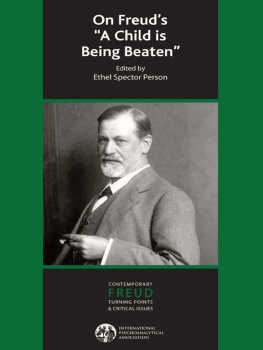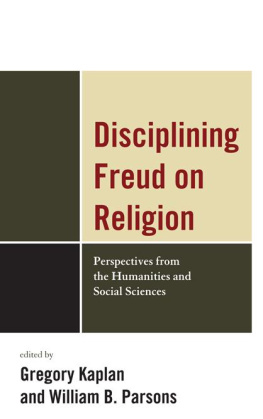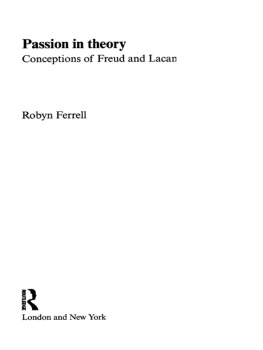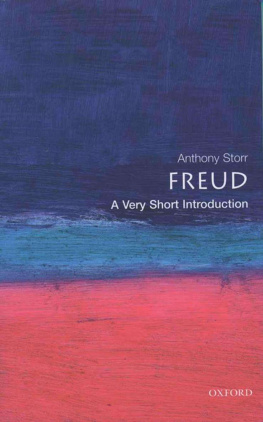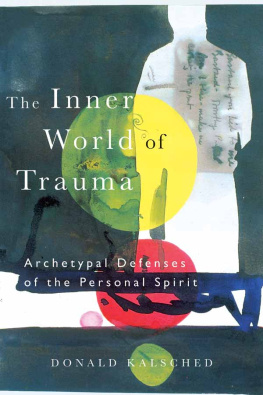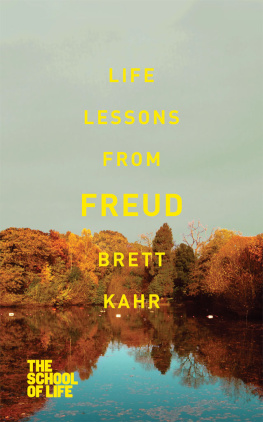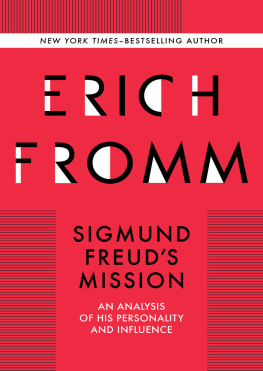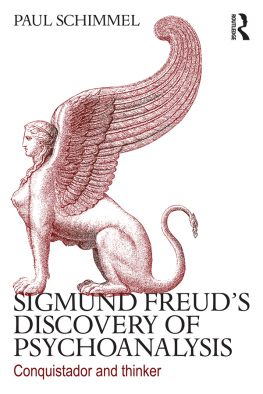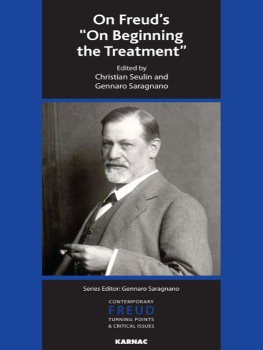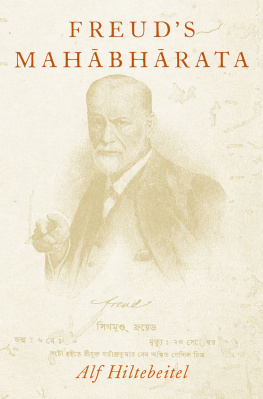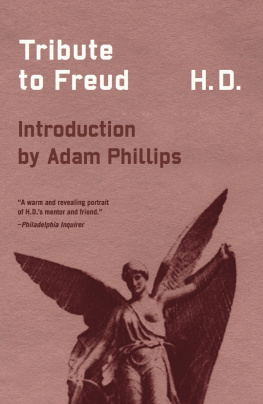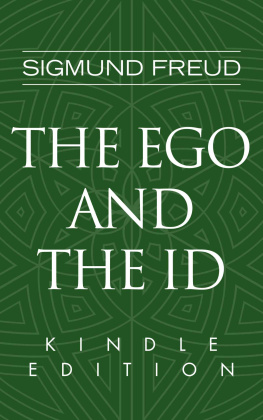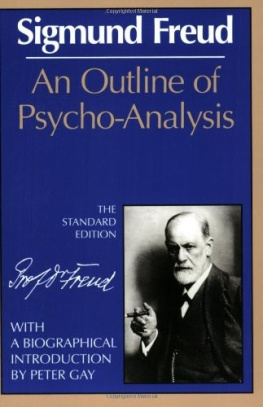Freud Sigmund - On Freuds A Child is Being Beaten
Here you can read online Freud Sigmund - On Freuds A Child is Being Beaten full text of the book (entire story) in english for free. Download pdf and epub, get meaning, cover and reviews about this ebook. year: 2018, publisher: Karnac Books;Routledge, genre: Children. Description of the work, (preface) as well as reviews are available. Best literature library LitArk.com created for fans of good reading and offers a wide selection of genres:
Romance novel
Science fiction
Adventure
Detective
Science
History
Home and family
Prose
Art
Politics
Computer
Non-fiction
Religion
Business
Children
Humor
Choose a favorite category and find really read worthwhile books. Enjoy immersion in the world of imagination, feel the emotions of the characters or learn something new for yourself, make an fascinating discovery.
- Book:On Freuds A Child is Being Beaten
- Author:
- Publisher:Karnac Books;Routledge
- Genre:
- Year:2018
- Rating:4 / 5
- Favourites:Add to favourites
- Your mark:
- 80
- 1
- 2
- 3
- 4
- 5
On Freuds A Child is Being Beaten: summary, description and annotation
We offer to read an annotation, description, summary or preface (depends on what the author of the book "On Freuds A Child is Being Beaten" wrote himself). If you haven't found the necessary information about the book — write in the comments, we will try to find it.
On Freuds A Child is Being Beaten — read online for free the complete book (whole text) full work
Below is the text of the book, divided by pages. System saving the place of the last page read, allows you to conveniently read the book "On Freuds A Child is Being Beaten" online for free, without having to search again every time where you left off. Put a bookmark, and you can go to the page where you finished reading at any time.
Font size:
Interval:
Bookmark:
Not for Barbarians
An Appreciation of Freud's A Child Is Being Beaten

JACK NOVICK AND KERRY KELLY NOVICK
Psychoanalysis is unlike other scientific disciplines. In physics or astronomy, for instance, the work of earlier years is often at best a curiosity, but history is central to psychoanalysis, in relation to both the individual and the field. Psychoanalysts assume that we all carry our pasts into the present and constantly revise the past in the light of subsequent experience. Thus we pass on to the future both the strengths and the weaknesses of our adaptations, accommodations, and conflict resolutions. In individual analyses or in the study of our theories analysts try to see what we can learn from the past and to correct errors so that they are not perpetuated. It is in this spirit that we feel it important to continue to study historical psychoanalytic papers, particularly those that are as central to the development of psychoanalytic thinking as A Child Is Being Beaten.
Not everyone finds this paper important. Peter Gay (1988), the most recent Freud biographer, does not even mention it. Even though Jones described the paper as a masterly analytic study (1955, 308), it seems to us that he dismisses the importance of the work by saying, In 1919, at a time when he was more engrossed with theory, Freud turned aside to publish a purely clinical study that reminds one of his earlier days (308). Jones's comment appears in the context of his description of Freud's burst of theoretical creativity culminating in the development of libido theory. Jones seems to have felt that A Child Is Being Beaten added nothing to Freud's evolving theoretical formulations. We find, however, that a major strength of this paper is the very number of ideas contained in it. Freud describes the empirical base for his formulationsa series of six casesand uses this relatively short, clinically descriptive piece to state, restate, or amplify major clinical and theoretical concepts: (1) the centrality of fantasy as the organizer of internal and external experience and as a product of synthesis; (2) the link between fantasy and gratification of masturbatory impulses; (3) the transformations and the vicissitudes of fantasyrepression and regression; (4) the centrality of the Oedipus complex to the formation of neurosis and in the sexualization of the beating fantasy; (5) the vicissitudes of memory, its complexity, and the reorganization of memory (Nachtrglichkeit); (6) the importance of post-oedipal development and the crucial role of guilt and shame in the dynamics of sadomasochism, with the experience of humiliation linked to the motive power of incompatible ideas; (7) the incompatibility of ideas as a motive for repression; (8) the importance of the role of the father in the Oedipus complex; and (9) the unconscious effect of fantasy on character and pathology, including severe pathology, such as paranoia, and the concept of sublimation are also elaborated. Moreover, this is Freud's only paper in which the female is the model for understanding and development.
The choice of emphasis for this essay is difficult, for each of these points warrants separate discussion. But many of them are interrelated and can be included as we address the ongoing clinical and theoretical problems of sadomasochism. We can read a psychoanalytic paper in much the same way that we listen to patients: mindful of its strengths and capacities, of the conflicts that emerge, of the formal characteristics of the material, and of the present and past contexts. As we discuss Freud's paper, we will touch on each of these four dimensions to examine the continuing relevance of this paper for our current understanding of sadomasochism in its manifold manifestations.
In examining a historical paper we have a benefit analogous to the reflection available in the clinical setting: errors, like conflicts, will be repeated unless they are noticed, remembered, and tested against current reality. Insights gained can sometimes be forgotten and have to be rediscovered. Just as self-analysis is repeatedly necessary, so we reread old papers to find lost points, to notice what went unacknowledged at the time of writing, and to highlight what Freud either did not develop or did not realize was the starting point of a further theoretical development.
Empathy is another clinical skill of the consulting room that may usefully be brought to the reading of a paper. Empathy has come to be enshrined in various theories but was discussed very early and extensively by Freud (1912, 1913) and Ferenczi, both separately and with each other (Ferenczi, 1955 [1928]; Grubrich-Simitis, 1986). Part of what Freud called Einfhlung involves the active apprehension of the context, past and current, of the patient's productions. So we might ask where Freud was in his theory-building when writing this paper.
By 1919, Freud was at a point of some frustration in his theorizing. The topographical theory was proving inadequate to explain sadomasochistic phenomena and functioning. He was faced in his clinical work and in the events of the world with things that went beyond the explanatory power of the pleasure principle. He was in a creative crisishis planned book on metapsychology was not yet written, and seven of the twelve metapsychological papers had disappeared or had been destroyed. We may infer that he felt escalating tension over the limitations of prestructural theory. Freud wrestled with the problems of sadomasochism throughout his career; indeed, each major shift in theory derived from continuing struggle to understand and address this pathology.
His personal life too provides important understanding of the context of this work. Freud's three sons, his sons-in-law, and his nephew all served in the army during World War I. His letters show his constant concern for their safety. Toward the end of the war, Freud's son Martin was imprisoned by the Italians, and the family had no word of his whereabouts for months. By 1915 most of Freud's younger colleagues were in the army, and he complained to Lou Andreas-Salom that he was once again alone. He had no patients and from 1916 until two years after the end of the war often had difficulty buying food for his family. His wife contracted influenza and pneumonia after the war, and her state of malnutrition made her recovery slow. As late as 1920, Freud's work was affected by a shortage of paper.
So, in the face of theoretical frustration and personal privation, suffering, and anxiety, Freud turned to an empirical study of what he called the essence of masochism (1919, 189). He described the beating fantasy as representing both debased genital love for the father and punishment for incestuous wishes. For ease of study and comparison of Freud's ideas with later developments, we will use here the summary of Freud's ideas from our 1970 study of beating fantasies in children (Novick and Novick, 1996 [1972]).
From adult analytic material Freud reconstructed the sequential vicissitudes of the beating fantasy in boys and girls. He suggested that the fantasy first appears in the preschool years and no later than five or six years of age. It has three phases in girls:
1. My father is beating the child whom I hate. Freud questions whether this can be called a fantasy and notes that it may represent rather a recollection of desires which have arisen (p. 185). The motive for this first phase is the child's jealousy of and rivalry with a sibling. Freud doubts that this first phase can be described as sexual and gives its full meaning as My father does not love this other child, he loves only me.
2. I am being beaten by my father. According to Freud this second phase is the result of a profound transformation of the first phase. Although the beater remains the father, the one being beaten is invariably the child producing the fantasy. This fantasy is of an unmistakably masochistic character and represents both debased genital love for the father and punishment for incestuous wishes. This phase of the fantasy is never remembered and, Freud adds, in a certain sensehas never had a real existence (p. 185).
Font size:
Interval:
Bookmark:
Similar books «On Freuds A Child is Being Beaten»
Look at similar books to On Freuds A Child is Being Beaten. We have selected literature similar in name and meaning in the hope of providing readers with more options to find new, interesting, not yet read works.
Discussion, reviews of the book On Freuds A Child is Being Beaten and just readers' own opinions. Leave your comments, write what you think about the work, its meaning or the main characters. Specify what exactly you liked and what you didn't like, and why you think so.

